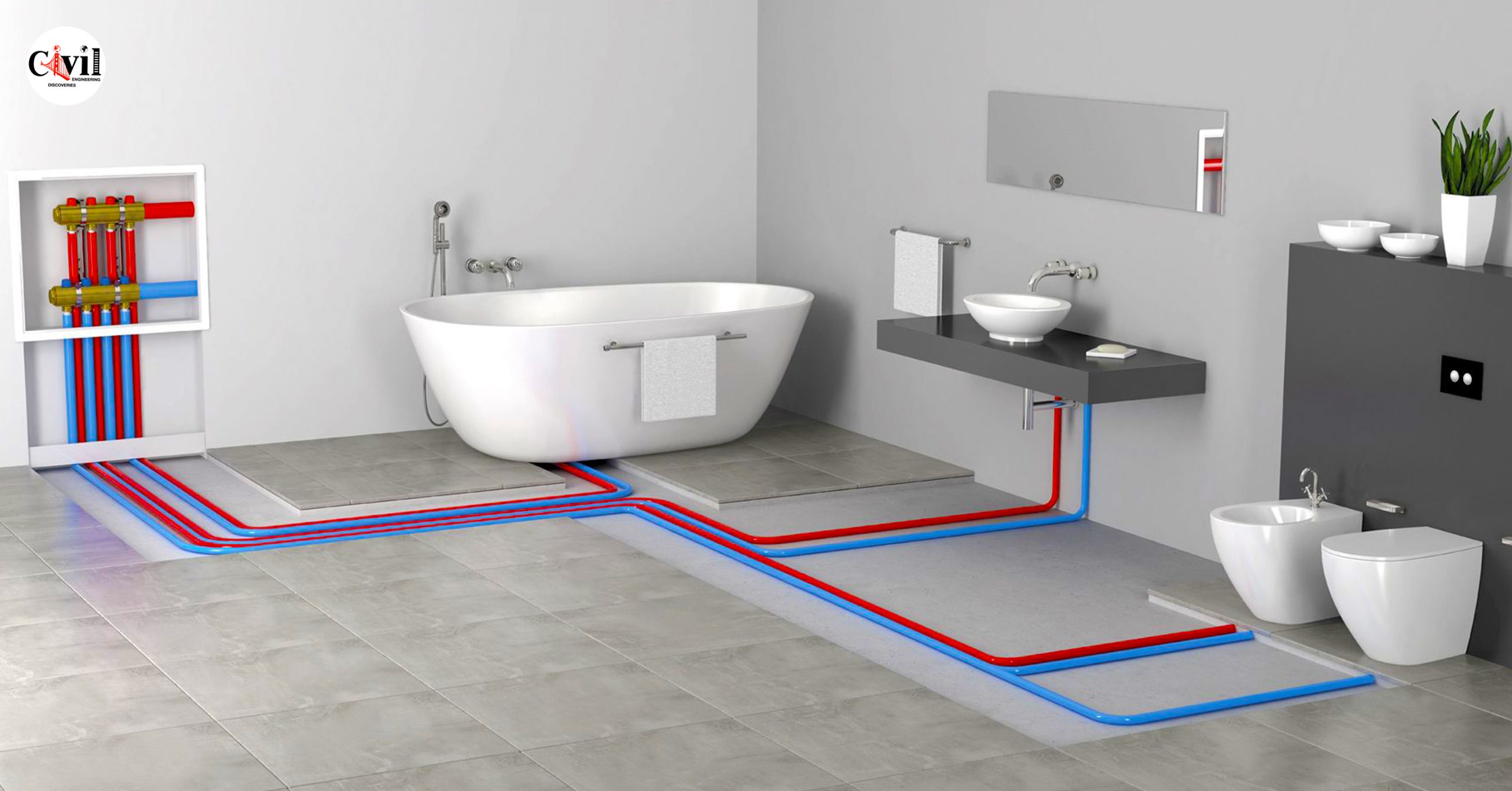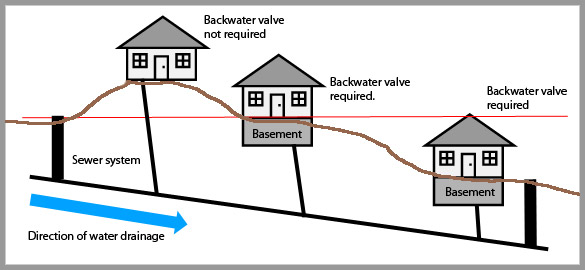The Core Elements of Your House's Plumbing System
The Core Elements of Your House's Plumbing System
Blog Article
This great article in the next paragraphs involving The Inner Workings of Your Home's Plumbing is totally attention-grabbing. Don't miss out on it.

Comprehending exactly how your home's pipes system functions is crucial for every single home owner. From supplying tidy water for alcohol consumption, cooking, and bathing to safely removing wastewater, a well-maintained plumbing system is crucial for your family's health and convenience. In this detailed overview, we'll explore the detailed network that makes up your home's plumbing and offer ideas on maintenance, upgrades, and dealing with typical problems.
Intro
Your home's plumbing system is more than just a network of pipelines; it's an intricate system that guarantees you have accessibility to clean water and reliable wastewater elimination. Understanding its elements and exactly how they collaborate can aid you protect against expensive repair work and guarantee everything runs efficiently.
Fundamental Components of a Plumbing System
Pipes and Tubes
At the heart of your pipes system are the pipelines and tubing that bring water throughout your home. These can be made from numerous products such as copper, PVC, or PEX, each with its advantages in terms of durability and cost-effectiveness.
Fixtures: Sinks, Toilets, Showers, etc.
Components like sinks, commodes, showers, and tubs are where water is used in your house. Comprehending exactly how these fixtures attach to the plumbing system assists in identifying troubles and preparing upgrades.
Valves and Shut-off Factors
Valves manage the flow of water in your plumbing system. Shut-off valves are important throughout emergencies or when you need to make repairs, allowing you to separate parts of the system without disrupting water circulation to the entire residence.
Water System System
Main Water Line
The primary water line attaches your home to the community water or an exclusive well. It's where water enters your home and is distributed to numerous fixtures.
Water Meter and Stress Regulatory Authority
The water meter steps your water use, while a stress regulator makes sure that water flows at a risk-free stress throughout your home's plumbing system, protecting against damage to pipes and fixtures.
Cold Water vs. Hot Water Lines
Comprehending the distinction in between cold water lines, which provide water directly from the major, and hot water lines, which bring warmed water from the water heater, assists in repairing and planning for upgrades.
Water drainage System
Drain Water Lines and Traps
Drain pipelines carry wastewater far from sinks, showers, and commodes to the drain or septic system. Catches avoid drain gases from entering your home and additionally trap debris that can cause blockages.
Air flow Pipelines
Ventilation pipes enable air into the drain system, protecting against suction that could slow down water drainage and create traps to empty. Appropriate ventilation is crucial for maintaining the stability of your pipes system.
Significance of Proper Drain
Ensuring proper drainage avoids back-ups and water damages. Consistently cleaning drains and maintaining traps can protect against expensive fixings and prolong the life of your plumbing system.
Water Heating Unit
Kinds Of Hot Water Heater
Hot water heater can be tankless or conventional tank-style. Tankless heating systems warm water as needed, while tanks keep warmed water for prompt usage.
How Water Heaters Connect to the Pipes System
Understanding just how water heaters attach to both the cold water supply and warm water circulation lines assists in detecting concerns like insufficient hot water or leaks.
Maintenance Tips for Water Heaters
Consistently flushing your water heater to get rid of sediment, checking the temperature setups, and evaluating for leaks can expand its life-span and enhance energy efficiency.
Common Plumbing Issues
Leaks and Their Causes
Leaks can occur due to maturing pipelines, loose fittings, or high water stress. Resolving leaks without delay avoids water damages and mold and mildew development.
Blockages and Clogs
Obstructions in drains pipes and bathrooms are usually triggered by purging non-flushable items or an accumulation of oil and hair. Using drain screens and bearing in mind what decreases your drains can stop blockages.
Signs of Pipes Issues to Watch For
Low tide pressure, sluggish drains, foul odors, or unusually high water costs are indications of potential pipes issues that need to be addressed promptly.
Pipes Upkeep Tips
Routine Evaluations and Checks
Schedule yearly pipes examinations to capture problems early. Try to find signs of leaks, deterioration, or mineral buildup in faucets and showerheads.
Do It Yourself Maintenance Tasks
Basic jobs like cleaning faucet aerators, looking for bathroom leakages utilizing color tablets, or shielding exposed pipelines in chilly climates can protect against significant pipes problems.
When to Call a Professional Plumber
Know when a pipes concern needs professional experience. Attempting complex fixings without correct understanding can result in even more damage and higher repair service costs.
Upgrading Your Pipes System
Reasons for Updating
Upgrading to water-efficient fixtures or changing old pipes can boost water top quality, minimize water expenses, and enhance the value of your home.
Modern Plumbing Technologies and Their Advantages
Discover modern technologies like clever leakage detectors, water-saving bathrooms, and energy-efficient hot water heater that can conserve money and reduce ecological impact.
Price Considerations and ROI
Calculate the ahead of time expenses versus long-lasting cost savings when thinking about plumbing upgrades. Lots of upgrades spend for themselves with lowered energy costs and fewer repair services.
Ecological Impact and Conservation
Water-Saving Fixtures and Appliances
Setting up low-flow faucets, showerheads, and commodes can significantly decrease water usage without sacrificing performance.
Tips for Lowering Water Use
Simple practices like taking care of leakages promptly, taking much shorter showers, and running full loads of laundry and dishes can conserve water and lower your utility bills.
Eco-Friendly Pipes Options
Take into consideration lasting pipes products like bamboo for floor covering, which is durable and green, or recycled glass for countertops.
Emergency Preparedness
Steps to Take During a Plumbing Emergency
Know where your shut-off valves are located and just how to switch off the water in case of a ruptured pipe or major leak.
Importance of Having Emergency Calls Helpful
Keep contact details for neighborhood plumbing professionals or emergency solutions conveniently offered for quick reaction during a plumbing situation.
DIY Emergency Situation Fixes (When Suitable).
Short-term fixes like making use of duct tape to patch a leaking pipe or positioning a container under a dripping tap can lessen damage till an expert plumbing gets here.
Final thought.
Recognizing the composition of your home's plumbing system equips you to keep it properly, saving money and time on repair services. By following routine maintenance routines and remaining informed regarding modern plumbing modern technologies, you can ensure your pipes system operates efficiently for many years to find.
Exploring Your Homes Plumbing Anatomy
Water Supply System
Main Water Line: This is where water enters your home from the municipal supply or a private well.
Water Meter: Typically located near where the main water line enters the property, it measures the amount of water used.
Shutoff Valve: It s crucial to know where this is in case of emergencies. It allows you to turn off the water supply to the entire house.
Pipes and Fittings: These distribute water throughout your home. Materials can include copper, PVC, or PEX.
Drain-Waste-Vent (DWV) System
Drains: Located in sinks, showers, and tubs, these carry wastewater away.
Traps: U-shaped pipes under sinks that hold standing water, blocking sewer gases from entering the home.
Vents: Pipes that lead from the DWV system to the outside, preventing vacuum formation and allowing gases to escape.
Sewer Line: Carries all wastewater from the home to the municipal sewer system or a septic tank.
Fixtures and Appliances
Sinks, Toilets, and Showers
Dishwashers and Washing Machines
Water Heaters
Maintenance Tips
Regularly check for leaks in exposed pipes and around fixtures.
Inspect the water heater annually for signs of wear.
Clean drains and traps to prevent clogs and odors.
Know how to shut off water to individual fixtures.
When to Call a Professional
Major leaks or burst pipes
Installation of new pipes or fixtures
Septic tank issues
Remodeling projects that involve plumbing changes
Conclusion
Understanding the anatomy of your home's plumbing is key to maintaining a functional and efficient system. Regular checks and knowing when to call in the experts can save you time, money, and stress.
https://www.mavyn.com/blog/exploring-your-homes-plumbing-anatomy

Exploring Your Homes Plumbing Anatomy
Water Supply System
Drain-Waste-Vent (DWV) System
Fixtures and Appliances
Maintenance Tips
When to Call a Professional
Conclusion
Understanding the anatomy of your home's plumbing is key to maintaining a functional and efficient system. Regular checks and knowing when to call in the experts can save you time, money, and stress.
https://www.mavyn.com/blog/exploring-your-homes-plumbing-anatomy
As an enthusiastic person who reads on Plumbing Installation 101: All You Need to Know, I figured sharing that article post was essential. If you enjoyed our post plz consider to pass it around. Kudos for your time. Return soon.
Free Estimate Report this page